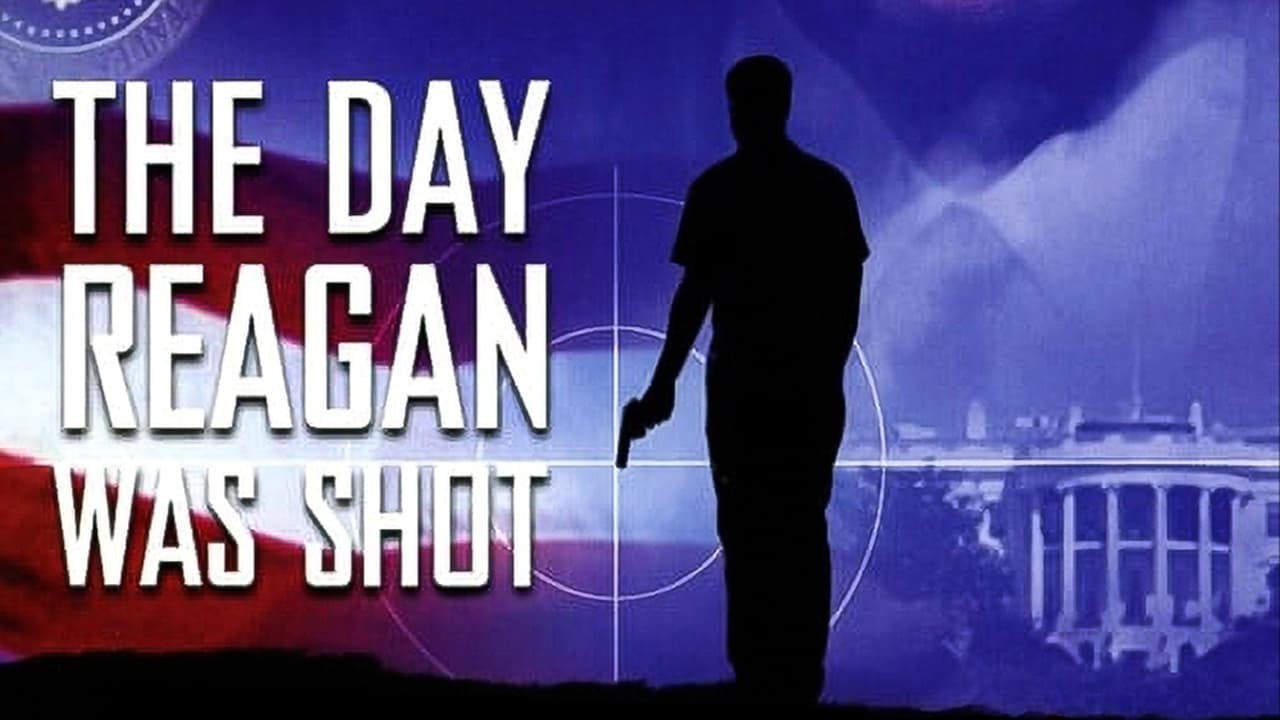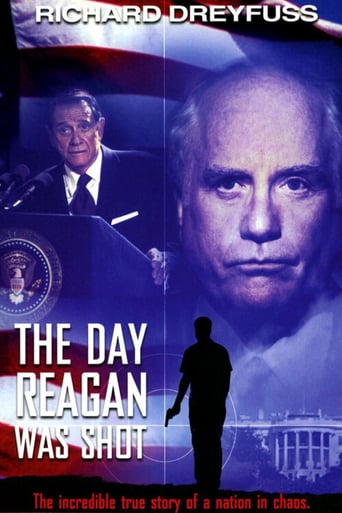


To history buffs, no matter what they say, Oliver Stone movies are a guilty pleasure. It's got to be fun knowing real history, and I mean the arcane stuff, then watch someone take it, distort certain aspects out of it, and package it up into pop culture. The Oliver Stone product is essentially the best allohistory out there. (Ok, Ian McKellan in "Richard III" (1995), placing the Shakespeare story in an fascist pre-war England is still the best, but there has to be something said for quantity. JFK (1991), Nixon (1995), Path To War (aka LBJ) (2002), and this gem add up to a lot of entertainment.)Stone is only somewhat limited by the endpoint constraints of actual history (i.e., on the morning of March 30, 1981, Regan is shot, and by the evening, Vice President George H.W. Bush is back in Washington). But other than that, it's open season for counterfactuals. Yes, Haig was famous for his "Haig-isms", and was prone to make statements like the famous "I'm in charge here" gaff. He actually did take the lead in the control room. But I only wish he acted like the Dryefuss portrayal, which makes the attempted coup in the classic "Seven Days in May" (1964) look like an episode of "The West Wing". From the start, Dryefuss' Haig is clearly the villain, much more so than Hinkley, who appears relatively level-headed. Hinkley just wants to impress Jodie Foster. Haig wants to press the button.Dryefuss barely uses any restraint in the character, and at times reminded me of his comic performance as Jay Trotter in "Let It Ride". Anyway, he goes screaming for the nuclear football, tries to invoke the 25th Amendment, in-fights with Cap Weinberger, negotiates with the Soviets over the hotline about an ICBM launch, while holding NORAD on the line. Meanwhile, I thought Richard Crenna did a great job of looking kind of like Reagan. (Actually, Dryefuss looks a lot like Haig himself.) And I thought Michael Murphy as Michael Deaver was brilliant casting. Also, I have no problem with their unflattering portrayal of Nancy Reagan. But, they went a little too far in the scene where they try to prop up Reagan in the hospital bed for a picture (note the blurred camera POV, and the where-am-I smile on Regan). That was comedy straight out of Woody Allen's Sleeper (1973) where Allen is just unfrozen after 200 years and they're trying to get him past the security agents.It would have all been good fun, except then National Security Adviser Richard Allen made a tape of the whole affair, using a Sony recorder, and forgot about it for 20 years. It surfaced again just after the movie was filmed, but before it was released. The transcripts were published, and the cabinet secretaries had a reunion on the Larry King Show, to play back parts of the tape, and other media coverage of the day. Al Haig's behaviour that day was only a minor issue, and his old colleagues said nothing got out of control, and things went about as would be expected for that kind of crisis. Not exactly 13 days in October. Unless you're Oliver Stone.
... View More***SPOILERS BELOW***This movie was so comical I couldn't help but wonder how true the preposterousness of all of the events were. VP George Bush scared to take control? Haig that cutthroat, and at the same time as bitchy as a little school girl? The Secret Service men THAT inept to let that 'failed medical student' THAT close to Reagan? The Secret Service men and the FBI getting into catfights about Reagan's clothes? The phones in the 'crisis control center' not working? Nancy Reagan & Co. trying to get a picture of Reagan smiling to ease the press/public? LOL!! I've NEVER seen the gov't bend over backwards in a movie for the press like they did here. If half of the stuff depicted in this movie is true, it just goes to show how pathetic the government was in handling all of this. As a movie it kept me entertained....its an interesting outlook on the events. The moviemakers have us by the jockstrap because no one really knows what went on in the White House & at George Washington hospital. But the events depicted just shows the US as a pretty pathetic institution, especially in times of crisis when its needed to be in total control. As I said, if half of the events that happened here are true, its just another blemish on the ever fading image of the US government.**1/2 out of **** stars.
... View MoreI'll get to the movie in a minute. First, someone wanted "proof" about Clinton's comments at Georgetown, where he claimed that the USA "deserved" the 9-11 attacks. Well, here's what Clinton said:"In the first Crusade, when the Christian soldiers took Jerusalem, they first burned a synagogue with 300 Jews in it and proceeded to kill every woman and child who was a Muslim on the Temple Mount. I can tell you that story is still being told today in the Middle East and we are still paying for it."WE'RE still paying for it? Whaddya mean "we", paleface? The Marines didn't storm the Temple Mount. But in truth, Clinton never really came out and flatly said that we "deserved" 9-11. Like all his statements during his presidency, he IMPLIED that we deserved 9-11. Just point out "fact" A, B, C, and maybe D, and let the listener deduce that they must add up to conclusion X. When in truth, most of Clinton's "Facts" added up to guacamole.But that's beside the point. We're here to talk movies, not politics. Unfortunately, when Oliver "Captain Conspiracy" Stone does a movie, you can't escape his warped politics. It was only a matter of time before he focused his paranoia and bitterness on the Reagan Era, and what better time than when Stone's dreams almost came true, on the day Reagan nearly bought the farm. Unable to find any nefarious plots or schemes in Hinckley's assassination attempt, he invents one with Al Haig. From a simple misunderstanding of the chain of Constitutional authority, Haig is transformed from a public servant who really should have brushed up on his remedial civics into a raving megalomaniac. You almost expect Haig to rub his hands together like Montgomery Burns and tell Cap Weinberger to "Release the Hounds." Stone even recruits the smarmiest person in Hollywood to play our former Secretary of State, Richard Dreyfuss. A guy you love to hate on sight.Overall, the movie is OK. Average, hovering on below average. Don't bother renting or buying. Try to catch it on cable. 4 out of 10.
... View MoreThis made-for-TV movie, produced by the liberal's liberal, Oliver Stone is a compelling, exiting and watcheable portrayal of events which were pretty forgettable in real time. One wonders if the White House was this dysfunctional at the time....everbody behaves badly. One might expect tight-lipped shrillness (an oxymoron) from Nancy Reagan, but poor Sarah Brady, wife of wounded press secretary James Brady fares not much better as she wails "what have THEY (who?) done to you!?!?". After relentless mean spirited badgering of Defense Secretary Caspar Weinberger by Secretary of State Alexander Haig, someone finally says "show some tact, Al." I think the deck gets stacked against this Republican Administration most especially in the wimpy portrayal of Bush'41, who is both clueless and deferential to a fault throuout the movie. The Gipper fares not much better. Still, its great storytelling.
... View More